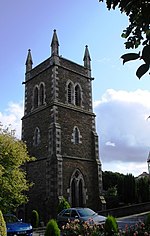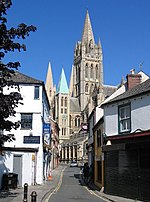Courtney Library

The Courtney Library is the library of the Royal Institution of Cornwall. It is housed in the Royal Cornwall Museum in Truro, Cornwall. The library holds the collection of the Museum as well as around 30,000 documents relating to Cornish families and estates, newspaper files, photographs, maps and various other collections. The Courtney Library also owns a full index of the RIC's annual journal from its first publication in 1864.The University of Exeter's Institute of Cornish Studies notes that the Courtney Library has "an extensive collection" on local history, archaeology, mining and geology.In 2018, the bicentenary year of the RIC, the library announced it was preparing to digitise a notebook of the mineralogist Philip Rashleigh in order to better preserve it.
Excerpt from the Wikipedia article Courtney Library (License: CC BY-SA 3.0, Authors, Images).Courtney Library
River Street, Truro Ferris Town
Geographical coordinates (GPS) Address Phone number Website Nearby Places Show on map
Geographical coordinates (GPS)
| Latitude | Longitude |
|---|---|
| N 50.2637 ° | E -5.0548 ° |
Address
Royal Cornwall Museum
River Street 25
TR1 2SJ Truro, Ferris Town
England, United Kingdom
Open on Google Maps










